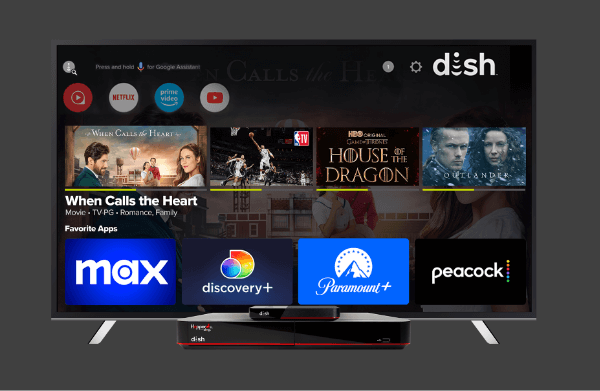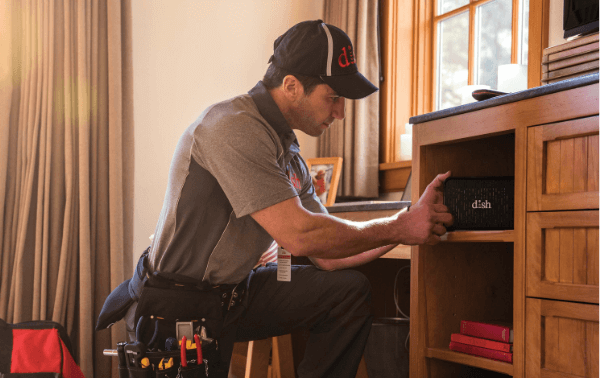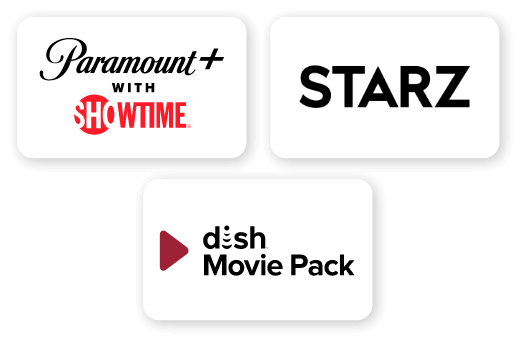QoS Settings: How to Prioritize Internet Traffic in Your Busy Household
Table of Contents
The number of devices competing for bandwidth in our homes has grown exponentially. From smart TVs and gaming consoles to laptops and smartphones, every device demands its share of your internet connection.
When multiple devices are active simultaneously, you might notice sluggish performance, buffering videos, or laggy online games. Before upgrading to a more expensive internet plan, consider optimizing your current connection with Quality of Service (QoS) settings.
What Are QoS Settings?
QoS (Quality of Service) settings are router features that allow you to prioritize certain devices, applications, or services on your network [1]. This technology controls how your router allocates bandwidth, ensuring critical devices and applications receive the resources they need for optimal performance. Instead of all devices competing equally for bandwidth, QoS settings create a hierarchy that determines which connections take priority.
For example, if someone is downloading large files while you’re trying to attend a video conference, QoS settings can ensure your video call gets priority bandwidth, preventing interruptions despite the concurrent download happening in the background.
Why You Should Use QoS Settings

Why care about QoS?
Implementing QoS settings on your home network offers several significant benefits:
- Reduced lag for important applications: Prioritize time-sensitive activities like video conferencing or online gaming to minimize disruptions.
- Better streaming experience: Ensure streaming services maintain consistent quality without buffering.
- Balanced network performance: Prevent a single device or user from monopolizing your entire connection.
- Maximize existing bandwidth: Get more from your current internet plan without paying for upgrades.
- Custom priority based on your needs: Tailor bandwidth allocation to match your household’s unique usage patterns.
QoS becomes particularly valuable in households with multiple users and devices competing for limited bandwidth. If you’ve ever experienced video calls freezing while someone else streams HD content, or if your online gaming suffers when large downloads are in progress, QoS settings can help resolve these conflicts.
How QoS Settings Work
Most modern routers include QoS capabilities, though the implementation varies between manufacturers. Generally, QoS functions in one of two ways:
- Device-based prioritization: Assigns priority levels to specific devices on your network. For example, your work laptop could receive high priority while a smart speaker gets lower priority.
- Application-based prioritization: Prioritizes specific types of internet traffic regardless of the device. This might prioritize video conferencing applications over file-sharing services.
Some advanced routers also feature automatic QoS, which identifies and prioritizes time-sensitive traffic like video calls and gaming without manual configuration [2].
How to Set Up QoS on Different Router Brands
The process for setting up QoS varies by router manufacturer. Here’s how to configure QoS on some popular router brands:
TP-Link Routers
- Access your router’s admin page by entering http://tplinkwifi.net or http://192.168.0.1 in your web browser [3].
- Log in with your credentials (default is usually admin/admin).
- Navigate to Advanced > QoS.
- For application priority:
- Select “Application Priority"
- Set your total bandwidth (either manually or using the built-in speed test)
- Choose categories (Gaming, Streaming, Surfing, etc.) based on your priorities
- Save your settings
- For device priority:
- Select “Device Priority"
- Toggle switches to activate priority for specific devices
- Use dropdown menus to select how long each device should maintain priority
- Save your settings
NETGEAR Routers
- Connect to your router and enter http://www.routerlogin.com, http://www.routerlogin.net, or http://192.168.1.1 in your browser [4].
- Log in with your credentials (default is admin/password).
- Navigate to ADVANCED > Setup > QoS Setup.
- For application prioritization:
- Under Priority Category, choose Applications or Online Gaming
- Select the application you want to prioritize
- Assign a priority level (Highest, High, Normal, or Low)
- Apply changes
- For device prioritization:
- Choose MAC Address under Priority Category
- Select the device from the table
- Assign a priority level
- Apply changes
Google Nest Wi-Fi
- Open the Google Home app on your device [5].
- Select Favorites > Wi-Fi.
- Tap Devices, then choose the device you want to prioritize.
- Select “Prioritize device."
- Choose how long you want to prioritize the device.
- Save your changes.
Note that Google Nest Wi-Fi only allows prioritization of one device at a time.
Tips for Optimizing Your QoS Settings

Get the most out of your QoS
To get the most from your QoS implementation:
- Start by deprioritizing bandwidth-heavy, non-critical services rather than prioritizing everything. File-sharing services like BitTorrent are good candidates for lower priority settings.
- Enter accurate internet speeds when configuring QoS. Many routers require you to specify your maximum download and upload speeds. Use a service like speedtest.net to measure your actual speeds, then enter values slightly below these measurements (about 80-90% of your maximum) for optimal performance.
- Prioritize by time of day if your router supports it. For example, set work devices as high priority during business hours and gaming consoles as high priority during evening hours.
- Review and adjust regularly. As your usage patterns change, revisit your QoS settings to ensure they still match your priorities.
- Consider wired connections for devices requiring the highest priority. Ethernet connections are inherently more stable than Wi-Fi and can improve performance for critical devices.
Combining QoS with Other Network Optimizations
While QoS settings can significantly improve your network performance, consider these additional strategies:
- Upgrade to a mesh Wi-Fi system if you have Wi-Fi dead zones in your home.
- Place your router in a central location away from interference sources.
- Use the 5GHz band for high-priority devices when possible, as it typically offers faster speeds with less interference.
- Consider a router with VPN capabilities to prevent throttling by your ISP and better protect your network privacy.
Bottom Line

Make QoS work for you
QoS settings offer a powerful way to optimize your home network without costly internet plan upgrades. By prioritizing important devices and applications, you can ensure smooth performance even during peak usage times. Whether you’re working from home, streaming entertainment, or gaming online, proper QoS configuration helps everyone in your household enjoy a better internet experience.
Keep in mind that every router handles QoS a bit differently, so be sure to check your router’s manual for specific steps. With a little setup and some occasional tweaks, you can make the most of your internet connection and cut down on those annoying slowdowns and interruptions.
FAQs About QoS Settings
How do I access my router’s QoS settings?
Most routers allow access through a web browser by entering your router’s IP address (commonly 192.168.0.1 or 192.168.1.1) and logging in with your credentials. Some newer routers may use a dedicated mobile app instead.
Should I prioritize by device or application?
This depends on your specific needs. Device prioritization is simpler and works well when specific devices (like a work laptop) need consistent priority. Application prioritization provides more granular control but requires more setup.
Will QoS settings slow down my overall internet speed?
No, QoS doesn’t reduce your total bandwidth. It simply manages how that bandwidth is distributed among devices and applications based on your priorities.
Can I prioritize gaming consoles for better online gaming?
Yes, either set your gaming console as a high-priority device or prioritize gaming applications in your QoS settings. Some gaming-focused routers even have preset gaming profiles for optimal performance.
Do I need QoS if I have a high-speed internet connection?
Even with fast internet, QoS can be beneficial during peak usage times when multiple devices are competing for bandwidth. However, the benefits become more noticeable on connections with limited bandwidth.
Sources
[1] Fortinet. “What Is QoS In Networking?"
[2] Netgear. “How QoS improves performance."
[3] TP-Link. “How to set up QoS using TP-Link Wi-Fi Router (new designed blue UI)."
[4] Netgear. “How to enable Quality of Service (QoS) on routers using the NETGEAR web interface?"
[5] Google Nest. “Prioritize a device on your Wi-Fi network."






 Call
Call 

 Access Your Account
Access Your Account